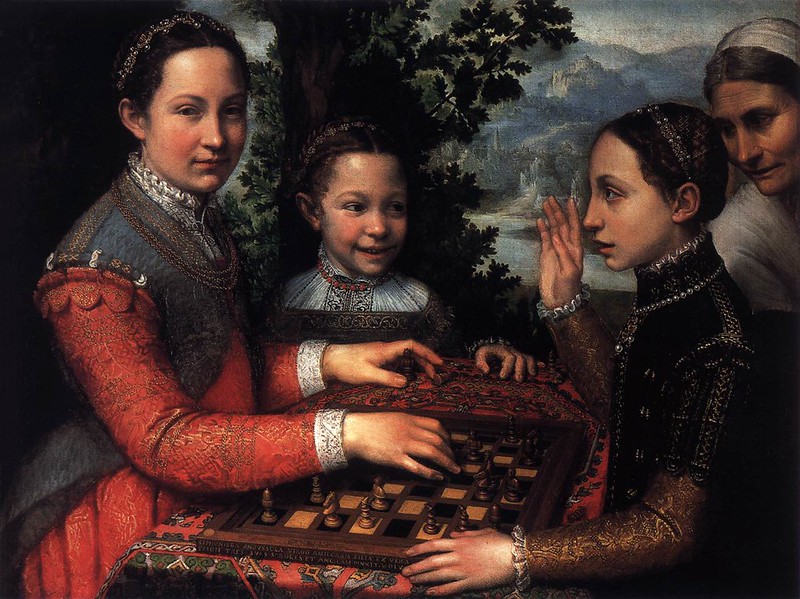The age of the Renaissance marked a transformation in European art, culture and architecture. From the influential works of Leonardo da Vinci to Michelangelo, a new perspective on art was born, leaving medieval ideals behind.
While male artists gained prominence throughout Europe during the 16th and 17th century, female artists with individualism and naturalistic styles were often ignored. However, 2024 marks a new era where female creators of the Renaissance are finally being recognized and celebrated for their contribution to visual arts in Europe through exhibitions in Boston and Baltimore.
Why Were Female Artists of the Renaissance Forgotten?
With a large portion of Renaissance art dominated by the works of male artists the contribution of female painters and sculptors has often been overshadowed. As traditional gender roles were prominent in the 16th century, the divide between male and female artisans was significant, and female creators fell through the cracks.
With Renaissance art centered around different aspects of learning, women were placed at a disadvantage, receiving less education, fewer opportunities and limited mentorships to thrive in art, as they were expected to get married or join the convent.
Despite the gender barriers, many female artists continued to preserve their craft. Plautilla Nelli, Artemisia Gentileschi and Sofonisba Anguissola, serve as three inspiring female artists who challenged the status quo in the 17th century through their commitment and love for art.
Plautilla Nelli (1524–1588)
As a nun of the Dominican order at the convent of St. Catherine of Siena in Florence, Plautilla Nelli is regarded as the first-known female artist of Renaissance Italy. In her time at the convent, Nelli was influenced to paint, where she transferred her passion through teaching workshops for women artists, breaking conventional gender expectations. A self-taught artist, she was prohibited from studying male nudes, and experimented with copying work from artists to develop her craft and skills.
As Nelli enhanced her creative expertise, she crafted large-scale devotional paintings and manuscript illuminations for church and private commissions. One of her most famous pieces is a 21 x 6.5 painting of the Last Supper with life-like portrayals of Jesus and the 12 Apostles. For 450 years, her work was in hiding; four centuries later, her art is finally on display at the Santa Maria Novella Museum, gaining long overdue recognition.
Sofonisba Anguissola (ca. 1532–1625)
Born into a wealthy Milanese family, Sofonisba Angulissola began her work as an artist at a young age, where she was given support and resources to practice. The encouragement she received from her family allowed her to gain experience working with Bernardino Campi, and become an acquaintance of Michelangelo. She began her career with self-portraits and group portraits, famously The Game of Chess (1555), an illustration of her sisters regarded for its realism.
With a strong education and talent, Sofonisba Anguissola became a painter at the court of King Philip II of Spain in 1559. Her position later changed to a lady-in-waiting to Philip’s queen, Elizabeth of Valois, a more gendered-approved position. Unfortunately, her creations were misattributed; however today, her work is slowly being reattributed, gaining more attention worldwide.
Artemisia Gentileschi (1593–1653)
For Artemisia Gentileschi, becoming an artist was in her blood as her family consisted of passionate, male artists who had a unique and dynamic artistic style. Rather than succumbing to the gender roles imposed by society, Gentileschi illustrated women as protagonists, equal to their male counterparts, inspiring new representation of women in art.
When Gentileschi moved to Florence, her career reached new heights as she earned patronage from the House of Medici and became the first woman to attend prestigious art school, Accademia Delle Arti Del Disegno. Gentileschi is largely recognized for her self-portraits and religious atmosphere pieces.
Our Role in History
Nelli, Gentileschi, and Anguissola represent the common experience female artists faced during the Renaissance. Female creators and innovators did not overcome barriers to be forgotten. It is up to us to acknowledge their work and impact, so that their art can be celebrated. With new art exhibits and resources coming to light, we have the power to carry on the legacy of 16th century artists whose inspiring work is finally getting the recognition it deserves.







